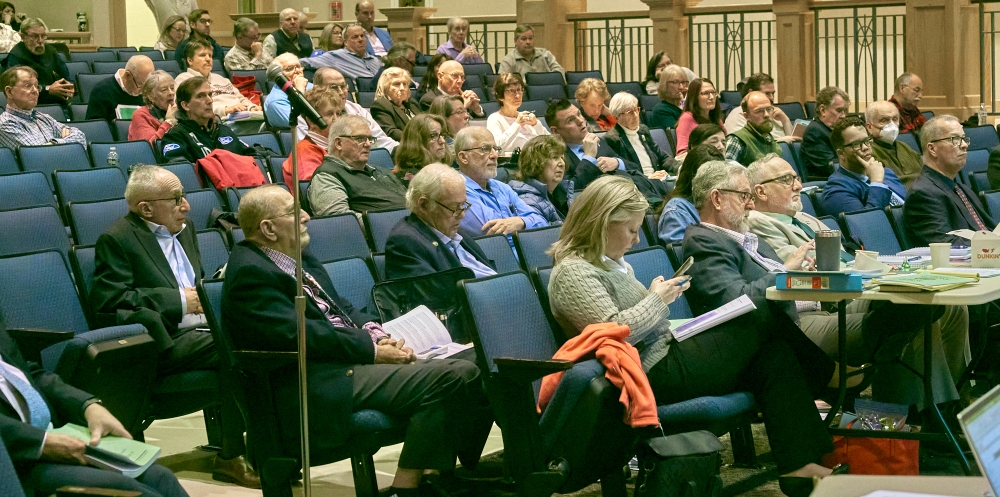Plymouth town meeting members waded through a long agenda Saturday — making it through 28 articles before adjourning until Monday night with two controversial issues still to be decided.
The town’s elected representatives, who attended either in person at Plymouth North High School or remotely, approved almost everything that came before them.
Members authorized a $280 million town operating budget for the fiscal year beginning July 1, including $119 million to fund the schools.
The town’s spending plan will substantially increase homeowners’ property taxes next year — by approximately 6.9 percent, town officials said.
Two items sparked heated debate: the proposed runway extension at the Plymouth Municipal Airport and a bylaw that would allow residents to build accessory dwelling units on their property.
The airport extension was soundly defeated by a 117-26 vote, after neighbors complained about noise and the airport managers’ alleged failure to consult them about the expansion plans.
Town Meeting members approved the article to increase housing in Plymouth by a vote of 107-32, with proponents arguing that the new law to enable Accessory Dwelling Units will make it easier for older residents to remain in their homes by renting out space. Opponents questioned whether the added housing units would strain town resources and possibly contaminate the water supply.
The meeting adjourned before two controversial items came up for votes. One was the appropriation of $4 million from the Community Preservation Fund to help pay for the construction of affordable apartments at Redbrook for people age 62 or older. It will come before the town meeting Monday night.
Also up for debate Monday is a proposal to apply $3 million in community preservation funds toward the construction of a family shelter to be run by the Plymouth Area Coalition for the Homeless. The Community Preservation Committee unanimously recommended the funding but the town’s Advisory & Finance Committee voted against it.
The day included both a regular annual town meeting and a special town meeting. Financial matters on the special town meeting warrant— which came first — apply to the current fiscal year. Financial matters on the regular town meeting agenda apply to next year.
Here is a look at some of the key votes.
Article 4: New building for DPW approved
Town Meeting approved $3.4 million to buy a building in the Camelot Industrial Park off Long Pond Road for use as new administrative offices for the Department of Public Works. The vote was 103 to 41.
The metal frame retail and warehouse building, located at 22 Mary B Lane, has approximately 12,000 square feet of space on the ground floor, with potential for expansion on a second level. It sits on 1.05 acres and abuts existing DPW buildings at 159 and 169 Camelot Drive.
“Right now, our offices are spread over five locations, which is not efficient for us, or for customer service,” DPW Director William Coyle said in his presentation to the Town Meeting. “This is a great opportunity to acquire a building right next door.”
The $3.4 million will cover the $2.35 million purchase price for the property, plus money for architectural design, engineering and project management services needed to renovate the building. Not included in the approved article is funding for the estimated $8 to $10 million in construction costs to convert the building into administrative offices. Construction will not proceed until approved by a future Town Meeting.
“This is a perfect location and this is being done in the right order,” said David Peck, chair of the town Building Committee and a member of the Planning Board who spoke in favor of the plan. “We don’t want to guess about the numbers. We will do the design first, then come back to Town Meeting with the right numbers for the cost to renovate the building.”
Coyle said he hopes the design and project budget will be ready to present to Town Meeting in the spring of 2025. Once the new administrative building is occupied, Coyle said, the town will repair and repurpose the buildings at 159 and 169 Camelot Drive to create more internal storage space for DPW vehicles and equipment.
Several Town Meeting members spoke against the purchase, saying the town has more pressing needs for funding, including new fire stations, a new elementary school for North Plymouth, and hiring more DPW employees to meet the current demand for road repairs and other DPW services.
– Michael Cohen
Article 7a: Higher taxes under new budget
Town Meeting members approved a town operating budget of $280 million for the fiscal year starting July 1.
The spending plan will substantially increase homeowners’ property taxes — by approximately 6.9 percent a year.
The owner of a home valued at $545,474 — the town’s average — would pay $488 more a year.
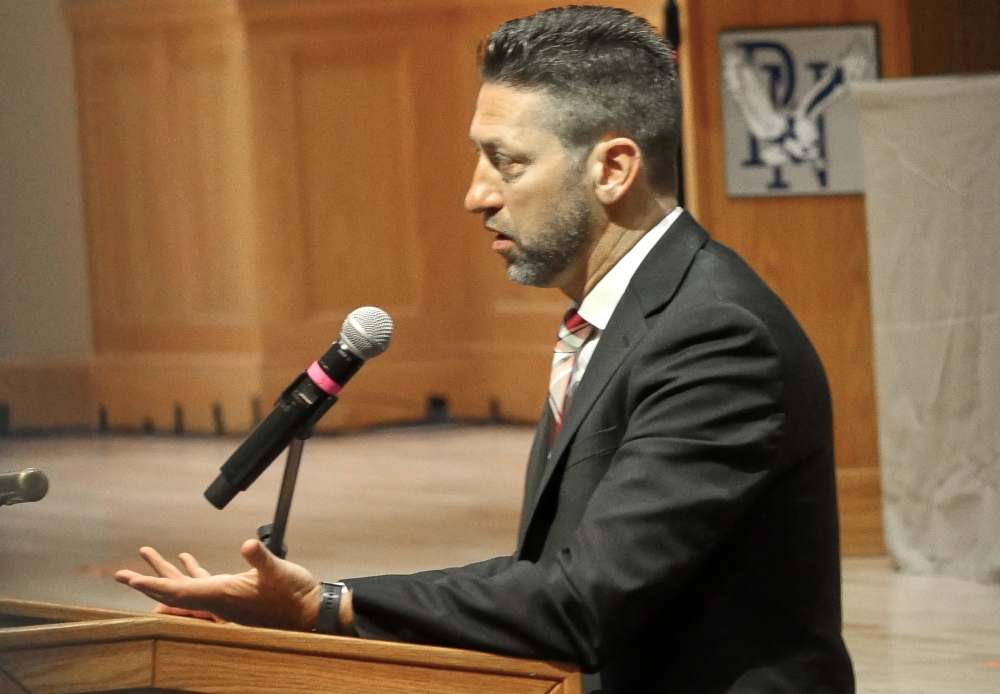
The number includes $119 million to cover school spending. That amount will fund the school department at the same level, with no new initiatives, according to school officials.
But the school budget doesn’t include all the money officials say they will need later in the year.
School Superintendent Christopher Campbell said the number isn’t sufficient to cover pay raises being negotiated this year with school unions and he expects to come back to Town Meeting in the fall seeking additional funds.
– Andrea Estes
Article 8: Money for possible purchase of Holtec land
Town Meeting members grilled select board member Kevin Canty before agreeing by a vote of 118-28 to put $500,000 into the town’s Nuclear Mitigation Stabilization Fund.
The money could help the town buy property that will eventually become available around the Holtec nuclear power site.
The Advisory & Finance Committee opposed the measure, citing financial pressures facing the town.
Canty urged members to plan for the future, saying that the more money the town can set aside, the more say the town will have when the 1,530 acres — the largest undeveloped parcel in town — goes up for sale.
“It has potential for substantial commercial development,” Canty said. “I think the community would benefit from being involved in the discussion.
“We believe it’s important to the future of this community to acquire the parcel,” he said. “This community has a history of making excuses— for not looking forward to our futures.”
He suggested the entire balance of the fund — which now stands at nearly $9 million — could be leveraged to purchase the land.
But some Town Meeting members objected, saying the fund was originally intended to help the town offset the loss of tax revenue from the power plant, now undergoing decommissioning.
—Andrea Estes
Article 9: Plan to lengthen airport runway “shot down” by Town Meeting
By an overwhelming 117-26 vote, with three abstentions, Town Meeting Saturday hit the brakes on the lengthening of a runway at Plymouth Municipal Airport.
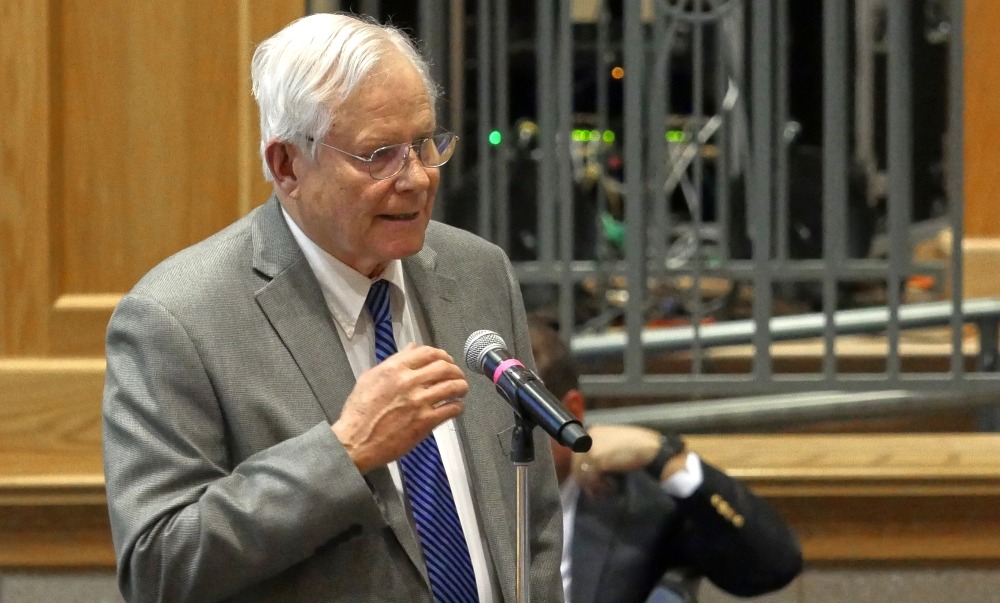
“I just got shot down,” said Kenneth Fosdick, chair of the Airport Commission, in an interview immediately after the vote. The Commission supports the project as a means of increasing margins of safety as jets that already use the airport take off and land. But many nearby residents opposed the expansion.
The Federal Aviation Administration would finance 90 percent of the $7.6 million project, with the state providing another 5 percent. The town’s share would be 5 percent as well, or $380,000. No local taxpayer funds are involved; the money would come from the airport’s enterprise fund, which is earned by the airport from business activities there.
The project cannot go ahead without the town funds, but the FAA would allow the airport to continue to operate as is if it does not proceed with the safety improvements.
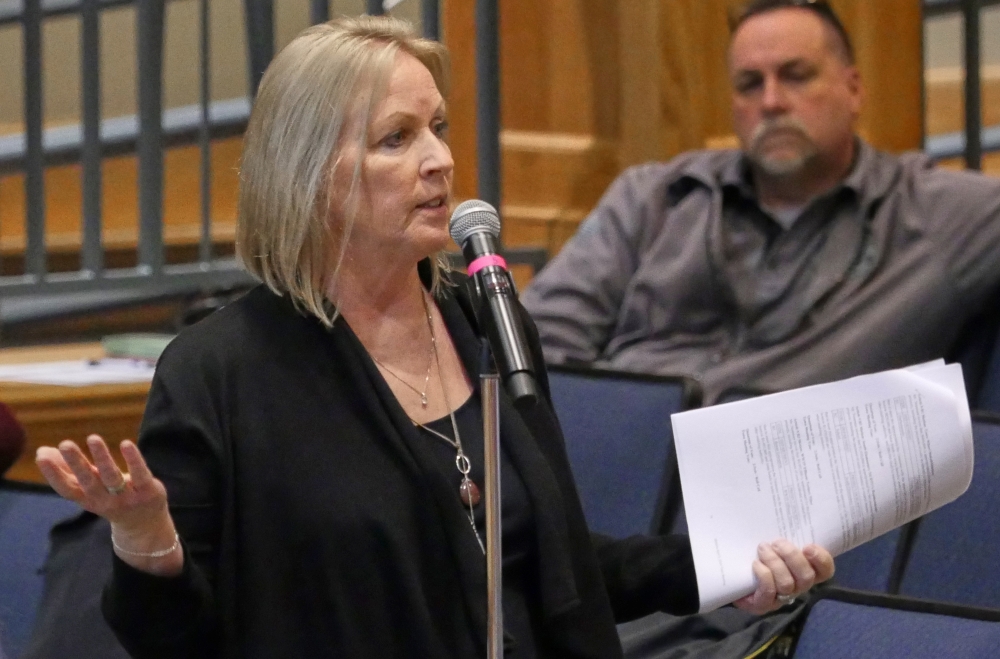
“We would not be penalized for not lengthening the runway,” Fosdick said.
During a lively discussion, neighbors of the airport swayed Town Meeting members with their complaints about noise and about being insufficiently consulted.
“The jets are getting bigger and bigger and louder and they are disturbing our peace of mind,” said Lisa Lantagne, who lives in West Plymouth. “We were never notified that the extension was a plan until four or five weeks ago.”
The Town Meeting vote did not kill the runway extension. Fosdick told the Independent that the Commission would proceed with a required environmental impact study and with the establishment of a citizens’ advisory group approved by the Commission last Thursday. The Commission could come back to Town Meeting this fall or next year for the $380,000.
–Fred Thys
Article 11: Anti-Loitering law approved
Town Meeting members voted 128-18 to create an anti-loitering law.
The measure, as originally proposed by Police Chief Dana Flynn, would have made it a violation for anyone to hang around a street, sidewalk, or parking lot “with the intent to cause public inconvenience, annoyance or alarm or recklessly create a risk of public inconvenience, annoyance or alarm.”
But after the Advisory & Finance Committee found the wording “too restrictive,” the bylaw was re-written to apply only to loitering in a parking lot between 8 p.m. and 6 a.m.
Violations will be considered civil infractions rather than criminal offenses, and are subject to fines of $50 for the first offense, $100 for a second offense and $150 for any additional offenses.
Police can waive fines for a first offense.
– Andrea Estes
Article 12: Two new liquor licenses
Town Meeting voted 104 to 39 to ask the state legislature for permission to issue two new liquor store licenses. The town has already used up its allotment of 16.
There was minimal opposition to the measure, though several Town Meeting members had raised concerns previously.
Select board member Kevin Canty told members that the new licenses would be confined to South Plymouth and could never be transferred to other parts of town.
There are no liquor stores in the area, he said, and residents looking for alcoholic beverages now drive a long distance to get to a store in Plymouth, or “more likely” go to Bourne or Wareham instead.
New licenses will generate new taxes, Canty said.
“If we create two more liquor licenses, the businesses will come,” he said. “It’s a field of dream moment for Plymouth.’’
One license will likely go to Paresh Patel, who owns the Store at Sandy Pond campground, which already sells beer and wine.
The second license might go to the Redbrook development, which has no retailers selling alcohol.
But Joseph Hutchinson, a Town Meeting member representing the Redbrook neighborhood, opposed the measure.
“There is really no need for this,” he said. “What this does do is use up retail space in Redbrook where the liquor license is going to go. I urge you to vote no. “
– Andrea Estes
Article 14: More Housing For Plymouth
With the struggle to afford to live in Plymouth a common theme throughout debate, Town Meeting voted to expand the housing stock by allowing single-family homeowners to add a second living unit to their property.
Approved by a vote of 107 to 32, with one abstention, Accessory Dwelling Units (ADUs) will now be allowed in all residential and mixed-use districts in Plymouth “by right,” meaning no special permit or public hearing will be required.
It was the third time housing advocates had tried to add ADUs to the town’s zoning bylaw, with similar proposals failing in 2019 and 2021.
“This is an idea whose time has come,” said Planning Board member David Peck, who presented the article to Town Meeting. “It’s most important to help our seniors age in place, and it also gives options for younger people and families who need an affordable place to live.”
Peck and other supporters said ADUs are part of the solution to the affordable housing crunch in town. Rental income from an ADU could help senior homeowners make ends meet and provide relatively affordable living spaces for younger people who are now priced out of the market. Alternatively, so-called “granny flats” can be used as a separate home for families to accommodate aging parents.
Before taking up the ADU article, Town Meeting debated an amendment from William Abbott of Precinct 16 to allow ADUs only on properties connected to the town sewer system, not septic systems.
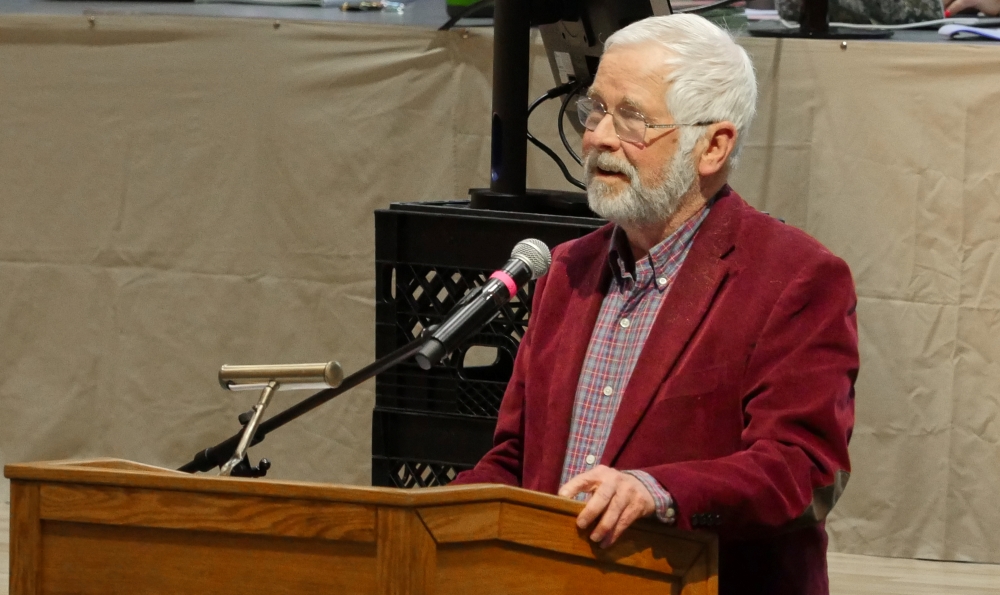
Abbott argued that many ponds in Plymouth are already overgrown with weeds and suffer periodic toxic algae blooms fueled by nutrients that leach from septic systems. Creating more housing units using septic systems could exacerbate the problem.
But the town sewer system covers only about 15 percent of the homes in Plymouth, primarily in the downtown and North Plymouth neighborhoods. The amendment would have denied ADUs for the majority of existing homes in south and west Plymouth, which are the fastest growing areas of town.
Kathryn Holmes from Precinct 9 said Abbott’s point on the ponds was valid, but blocking ADUs for most homes in town was not the solution. She pointed to hundreds of homes now planned or under construction by private developers in South Plymouth, all on septic systems.
“Let’s not handcuff families who really need this,” Holmes said. “Let’s help struggling families, not wealthy developers.”
Several other Town Meeting members echoed Holmes’ sentiments. The amendment failed 42 to 97 (with one abstention).
In the debate that followed on the original article, several opponents argued ADUs would change the character of single-family neighborhoods and create more demand for town services.
Under the new bylaw, an ADU can be freestanding on a lot, if there is sufficient land, or attached to an existing home. It must “maintain a separate entrance, either directly from the outside or through an entry hall or corridor shared with the principal dwelling sufficient to meet the requirements of the state building code for safe egress.”
Importantly, ADUs cannot be used as short-term rental units such as through AirBnB.
ADUs can be up to 900 square feet in size and must meet all other building, safety, parking, and health requirements. ADUs cannot be created within condominiums or attached townhouses. Mobile homes or recreational vehicles parked next to a single-family do not qualify as an ADU.
-Michael Cohen
Article 15: Expansion of Historic District Approved
Town Meeting Saturday backed the expansion of the Historic District by a vote of 124-16.
“Historic districts enhance property values,” said Michael Tubin, chair of the Historic District Commission.
Tubin reminded Town Meeting members that efforts at preservation have until now come after the loss of historic properties. The initial Historic District was formed in 1973 after the demolition of 100 houses in the Summer Street area, he said. This expansion of the district comes too late to save the foundry on Water Street, also set for demolition.
“We’re going to lose that building now,” he said, urging the action to preserve an additional 59 historic buildings.
The expansion of the Downtown & Waterfront District includes Union Street out to Barnes Lane and Lincoln Street, the west side of Lincoln Street plus 11 Lincoln St. (once the high school, later Town Hall, now the Plymouth Public Schools administration building) on the east side. It also includes Bradford Street, and the Plymouth Yacht Club, the Nathaniel Morton School, and the Plymouth Marina.
An Independent video shows the buildings in the approved expansion.
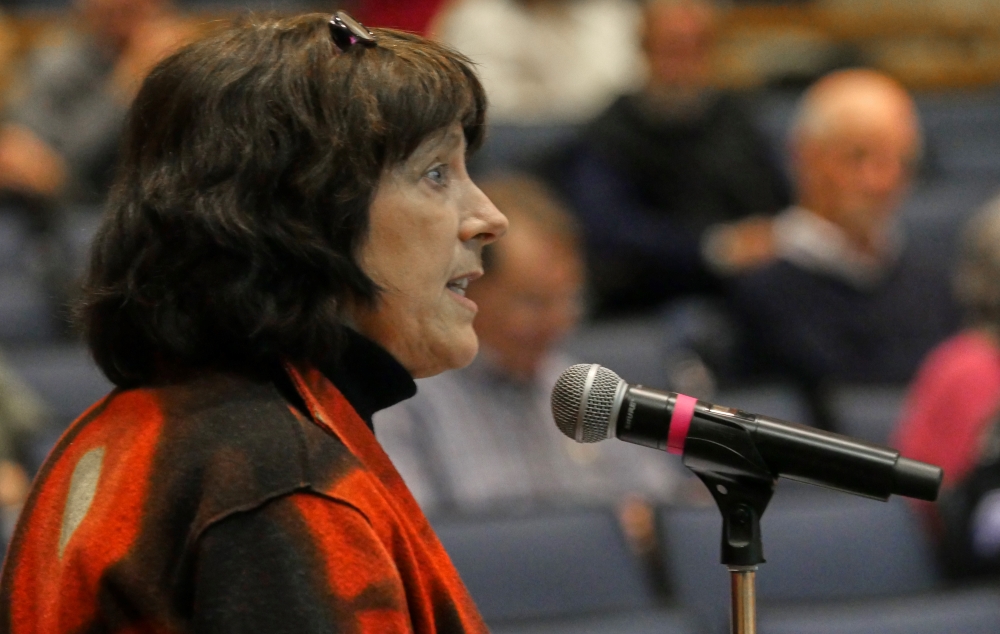
How a historic district works remained a mystery to some Town Meeting members. For example, Donald Williams, a member from precinct 8, proposed giving existing owners a pass on having to make any changes to their buildings.
“If you don’t want to change anything you already have your free pass,” replied Donna Curtin, a Town Meeting member from precinct 3, explaining that historic districts are meant to preserve exteriors of buildings but do not require owners to make changes. They also allow owners to make interior changes without approval from the Commission.
“It is one of the few tools that we have to preserve our history,” Curtin said. “Otherwise, we are completely at the mercy of the forces of change.”
– Fred Thys

